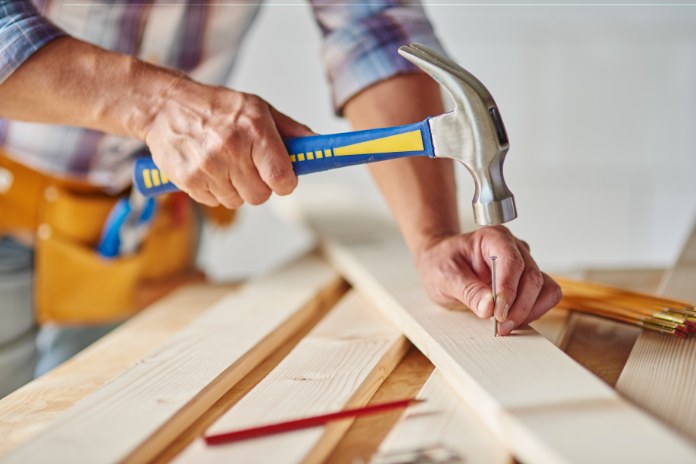Enhancing your home’s comfort, value, and energy efficiency are all benefits. It makes sense that so many homeowners are investing in improvement projects. In actuality, households spent $6,649 on upgrades and renovations in the previous year.
In addition to increasing resale value and lowering your heating and cooling costs, investing in repairs or improvements can pay off significantly. Consider getting a loan for home improvements to help pay for any renovations you want to make to your living space.
Recognize the Different Improvement Loan Types
Personal loans and home equity loans are two major ways to finance home improvements. Your credit position, the amount of equity you have available, and the amount of funding required for your project will all affect which loan is best for you.
Home Equity Loans
Similar to a second mortgage, a home equity loan has set terms and equal monthly payments. Depending on how much of your current mortgage has already been paid off, you can borrow up to that amount. Typically, lenders will offer about 85% of the total worth of your house after deducting any outstanding debt. This restricts the amount you can borrow, particularly if you are a first-time homeowner who hasn’t made many mortgage payments. However, you might get a sizable loan if you have a lot of equity.
One significant danger associated with home equity loans is that, as collateral, the bank may seize your property if you cannot make your loan installments. This loan type is expensive for improvements due to the high amount of fees it entails. You must be certain that you can manage long-term debt because periods might be as long as 30 years.
Personal Loans
A personal loan can be your best option for financing home improvements if you have modest equity but good credit and consistent income. Smaller-budget projects can benefit from personal loans, and you might be able to get funds more quickly than with a home equity loan. Personal loan expenses are modest and straightforward, but you should be aware of late fees if you miss a payment due.
Shorter loan terms save you time managing your debt, but you also risk accruing a big monthly bill. Although strong credit may enable you to get a lower rate, personal loan interest rates are often greater than home equity loans. The option to protect home equity and use it for larger projects in the future is a positive trade-off of using this form of loan for improvements.
Before beginning a project, apply
Homeowners frequently make the mistake of starting an improvement project straight away and not considering a loan until they run out of money in the middle of it. Home upgrades are always more expensive than you anticipate; therefore, before starting a project, it’s critical to estimate the overall cost and apply for a loan in the necessary amount.
To set a budget for your updates, seek quotes from many trustworthy businesses if you’re working with a contractor. If you choose to do it yourself, estimate the cost of the supplies and tools you will require and add money to account for unforeseen costs. Your total is the amount you should request when requesting a loan. It’s wise to apply first and start working later, as the loan application and approval procedure might take six weeks or longer. This will prevent you from getting stuck in a mess while you wait for the extra money to finish your project.
Alternative Loans for Home Improvement
It’s not always possible to be approved for a personal or home equity loan. Being turned down for loans by a traditional lender is frequently due to low income, bad credit, and a high debt-to-income ratio. If this occurs, you have a few choices:
Alternative lenders online: These lenders provide financing for borrowers with bad credit. However, short periods and high rates can put you in a difficult situation if you’re already having trouble with your finances.
-
-
- Home improvement loans guaranteed by the government: These loans, which the government secures to reduce the risk to lenders, may be available for some houses that require repairs and modifications.
- Improvements made to increase a house’s energy efficiency may be eligible for an energy-efficient mortgage (EEM) following a home energy assessment.
- This form of finance is occasionally made available to residents in rural areas who want renovations or repairs for their single-family homes.
- Credit cards or shop financing: For small tasks, utilizing a branded card from a home improvement business or charging the cost to your credit card may be the simplest solution.
-
How to Pick a Good Lender
Finding a lender with the appropriate loan type and structure to support your project is worthwhile because home improvements can raise property values and make your home more comfortable to live in. Research all your possibilities before you start, and decide what rates and terms your existing financial circumstances will allow you to secure.
When dealing with choices providing large loans for people with terrible credit, compare the proposals from several different lenders and keep this in mind. When you can, use free quotes to evaluate monthly payment obligations and learn more so you can decide which structure best suits your budget.
The amount of financing you can get for home modifications depends on your credit situation, your equity, and the consistency of your income. Make a list of your top potential lenders, and talk to each one about your requirements to see who can offer the most suitable finance and the finest level of customer care. You’ll quickly be on your way to a more lovely, cozy house with the proper lender supporting your project.
Featured Image: Freepik © gpointstudio







